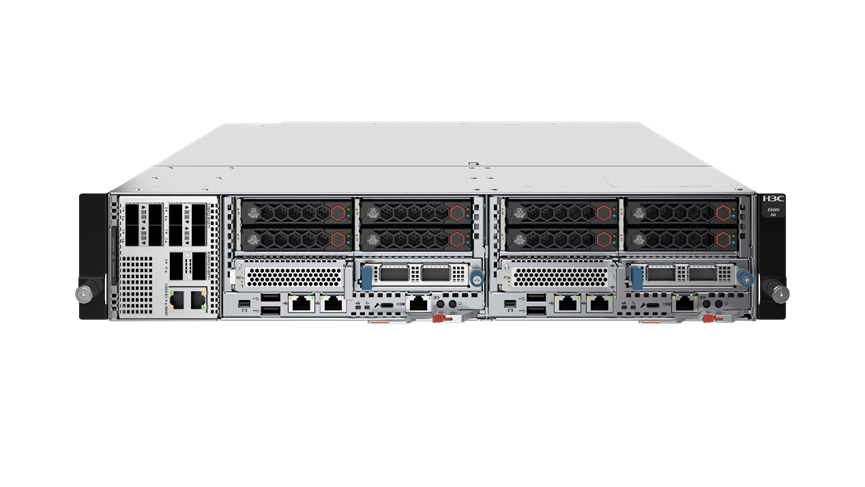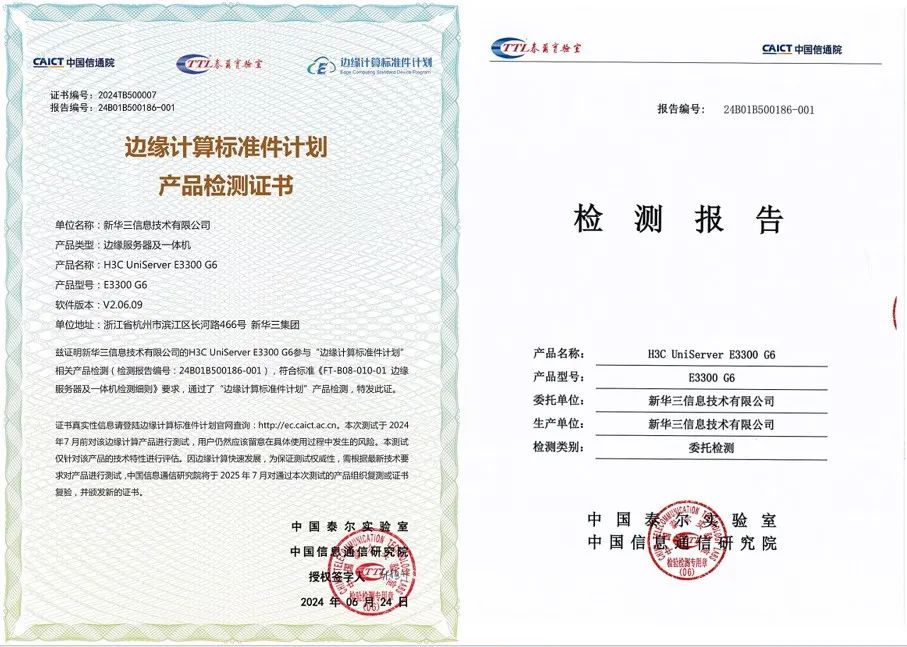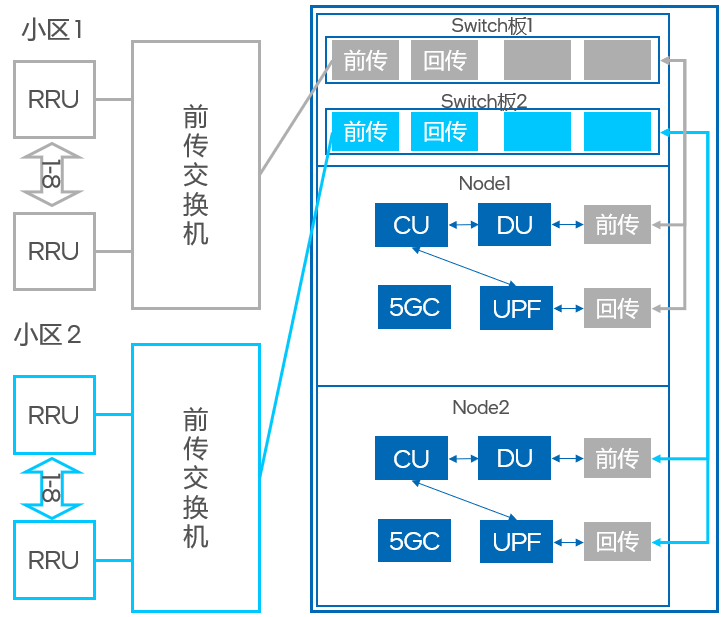
Introduction
As China’s first edge computing industry promotion project, the “Edge Computing Standard Parts Plan” was jointly initiated by the China Academy of Information and Communications Technology, the Industrial Internet Industry Alliance, and the Key Laboratory of Internet and Industrial Integration Innovation of the Ministry of Industry and Information Technology, aiming to form an industrial closed loop of “technology research and development, standard formulation, product testing, application demonstration, and large-scale commercial use,” providing users with reliable and accurate selection references, and has become a barometer for supply-side R&D iteration and demand-side selection deployment.
Recently, the H3C UniServer E3300 G6 intelligent edge server, independently developed by H3C Group, passed the product testing of the “Edge Computing Standard Parts Plan” conducted by the China Academy of Information and Communications Technology and Tair Lab. The report shows that the E3300 G6 meets the standards in 29 tests, including performance, compatibility, reliability, operation management, and security, achieving outstanding results. Currently, the E3300 G6 has been deployed in edge cloud, new energy power generation, and industrial internet fields, providing enterprises with powerful intelligent edge computing capabilities.

The E3300 G6 has multiple advantages such as modularity, multi-node support, and computing-network integration, helping enterprises to confidently tackle various edge environment challenges.
🔹 Modularity——The E3300 G6 decouples computing nodes from the chassis, allowing different nodes to be selected to meet various edge needs, with sizes including 1U half-width, 1U full-width, and 2U half-width, and functionalities including general-purpose computing, storage-intensive, I/O-intensive, and GPU nodes;
🔹 Multi-node——Supports inserting up to 2-4 nodes in a 2U chassis, allowing a single E3300 G6 to form an edge computing cluster with high availability characteristics;
🔹 Computing-Network Integration——Supports optional switching nodes, which can reduce total ownership costs through the integration deployment of IT and CT;
🔹 Flexible and Compact——Designed with a short chassis, suitable for space-sensitive scenarios such as 600mm deep cabinets and desktop placements;
🔹 Green and Efficient——Utilizes M-CRPS titanium power supply for a smaller size and higher efficiency; adopts a front I/O and hard disk solution for better heat dissipation;

Typical cloud-edge collaborative architecture diagram based on E3300 G6
The launch of the E3300 G6 edge server marks another breakthrough in H3C’s technological innovation, providing strong support for enterprises in the field of edge intelligence. With the widespread application and continuous development of edge computing in various fields, H3C will continue to focus on technological innovation and product optimization, providing enterprises with more advanced and reliable edge intelligence solutions. At the same time, we also look forward to more enterprises joining the edge computing industry to jointly promote the process of digital transformation and achieve smarter, more efficient, and sustainable development.

Typical Industries and Scenarios
As the demand for computing power on the edge rapidly grows, edge servers are also rapidly penetrating various industries, gaining widespread recognition in sectors such as telecommunications, power energy, enterprises, transportation, and industrial internet.
In industrial scenarios, the 5G private network air interface faces certain uncertainties due to factory environmental impacts. To improve the stability of the 5G private network, an AB network approach is needed to cover the factory area. Traditional solutions are limited by factors such as large equipment size and complex wiring. H3C, in collaboration with industry partners, has jointly developed an integrated machine for the 5G industrial private network based on the E3300 G6, which can greatly enhance the applicability and reliability of the 5G private network.

Generic Multi-Access Network Virtualization (GMA) is a software framework based on client/server architecture that virtualizes Wi-Fi, LTE/5G, etc., and manages edge data traffic to meet the different requirements of emerging applications (such as AR/VR, industrial applications, cloud gaming, etc.) regarding coverage, mobility, throughput, latency, and reliability. It supports various multipath traffic management operations, including switching, splitting, and copying.
In a single link scenario, with only one link for transmission and reception, retransmissions inevitably occur due to fluctuations in air interface quality, leading to significant network latency fluctuations. When multi-transmission selection is enabled, the receiving end prioritizes the first arriving data packets, which can greatly optimize the range of network jitter. Through comparative analysis of actual measured data, it can be concluded that enabling dual transmission selection reduces maximum latency by about 10ms, and the range of network jitter decreases from 25ms to 15ms.
Based on the high-density multi-node characteristics of the E3300 G6, the containerized 5G private network elements and edge application platforms are deployed on a containerized cluster within a single E3300 G6 chassis to provide various flexible deployment options for complex industrial scene implementation requirements. Compared to traditional solutions, using an integrated machine saves 60% of rack space, while internal cabling replaces optical modules and fibers, reducing external wiring, leading to efficient and highly reliable deployment. Operations and maintenance are simplified from multiple devices to one device, saving about 50% in operational and labor costs while streamlining maintenance.
Company Overview
Contact: Shi Qian
Contact Information: 13810435676 [email protected]